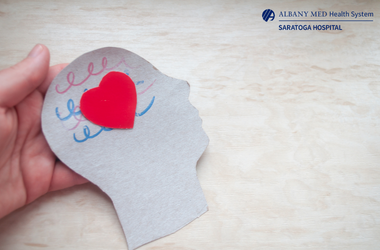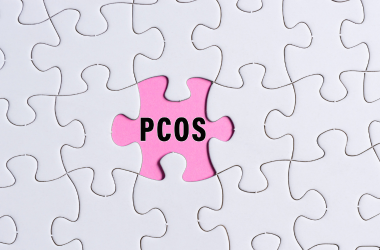Saratoga Hospital is committed to providing innovative technological services performed by highly credentialed industry experts to diagnosis and treat cardiovascular, neurological and pulmonary disease.
These services are provided at a variety of locations. Please refer to each service to see if it is offered at an exact location.



Click on any service to view more information.
An abdominal aortic ultrasound evaluates the abdominal aorta, the major vessel that supplies blood to the body. This test is often used to diagnose an aneurysm—a weakened or bulging spot—in the abdominal aorta.
Cardiac catheterization is a procedure used to diagnose and treat patients who have various forms of heart disease
Cardiac catheterization provides vital information about the heart and coronary arteries, including the location and severity of blockages. It also can be used to evaluate the strength of the patient’s heart muscle. This relatively painless, non-surgical procedure involves inserting a thin, flexible tube into a blood vessel and gently guiding the tube to the patient’s heart. Special x-ray equipment is used to monitor the movement of this catheter inside the body.
Whitney-Hendrickson Cardiovascular Center & Interventional Suite →
Carotid ultrasound uses sound waves to produce pictures of the carotid arteries in the neck, which carry blood from the heart to the brain. A Doppler ultrasound study – a technique that evaluates blood flow through a blood vessel – is usually part of this exam. It’s frequently used to screen patients for blockage or narrowing of the carotid arteries.
A dialysis access ultrasound provides information about the appearance and physical condition of your dialysis access graft or fistula, as well as the blood flow within the vessels. Commonly, this study is performed to check the maturation and patency of the graft or fistula, to check the volumes of blood passing through the vessels, and to evaluate the functional characteristics of the fistula or graft if complications have occurred during dialysis treatment.
Electrocardiograms (EKGs or ECGs) check and record the heart’s electrical activity. An EKG can show how fast the heart is beating, whether the rhythm is steady or irregular, and if parts of the heart are too large or overworked.
Electrophysiology services include implantation of loop recorders, pacemakers and implantable cardioverter defibrillators (ICDs). Pacemakers are small electrical devices implanted in the chests of patients who experience problems with a slow heart rate, keeping the heart beating regularly. An ICD is a device that restores a normal heartbeat by sending an electric pulse or shock to the heart. An implantable loop recorder (ILR), sometimes called an insertable cardiac monitor, is a small device that is implanted just under the skin of the chest to monitor the heart’s electrical activity).
Whitney-Hendrickson Cardiovascular Center & Interventional Suite →
Coil Embolization is a minimally invasive technique to treat an aneurysm or various tumor types by filling the target vessel with material that either closes off the sac to prevent rupture or reduces the blood flow to a tumor. Services include uterine fibroid embolization and varicocele embolization, as well as radioembolization and chemoembolization, which include highly targeted local delivery of radiation therapy or chemotherapy.
Whitney-Hendrickson Cardiovascular Center & Interventional Suite →
Hemodynamic monitoring measures the blood pressure inside the veins, heart, and arteries. This type of monitoring also measures blood flow and how much oxygen is in the blood.
Whitney-Hendrickson Cardiovascular Center & Interventional Suite →
Holter and event monitors are small, portable electrocardiogram devices that record the heart’s electrical activity while a person is doing his/her normal daily activities.
Interventional services can perform procedures deep within the body without surgery. Our interventional cardiologists perform state-of-the-art procedures, including cardiac catheterization, coronary angioplasty, and stenting.
Whitney-Hendrickson Cardiovascular Center & Interventional Suite →
Our neuro-diagnostic services include electroencephalogram (EEG) studies. These studies are noninvasive tests to record electrical activity in the brain.
Nuclear medicine uses very small amounts of radioactive materials, also known as tracers, that are either swallowed or injected, to help diagnose and treat a variety of diseases. It emits energy in the form of gamma rays, and a special camera scans the patient, detecting the rays and producing computer images of how an organ, tissue, or bone is functioning. A thallium scan is a cardiac nuclear imaging test that shows how well blood flows into the heart.
These services include pulmonary function testing to assess how well the lungs are working by measuring lung volume, capacity, rates of flow, and gas exchange. We additionally provide methacholine challenge testing, which is used to test for asthma.
A PVR study, also known as a vascular study or Doppler segmental pressure study, is a non-invasive test that evaluates the arterial blood flow within your arms or legs. This study utilizes a series of size-specific blood pressure cuffs that will be placed on your arms and legs, as needed, for your test.
A renal artery ultrasound assesses the arteries that supply blood to your kidneys, providing details about the blood flow into your kidneys, as well as the veins bringing blood out of your kidneys. Parts of your abdominal aorta are also examined. The study provides information about any blockages or narrowing in these arteries and checks for defects or aneurysm within artery walls.
Stress tests, also known as an exercise electrocardiograms, are performed to determine how effectively the heart is pumping. Services include cardiac exercise stress testing, nuclear stress testing, dobutamine stress test, stress echocardiography, and pharmacologic stress testing.
Transesophageal echocardiograms use sound waves to produce images utilizing a specialized probe through the esophagus to collect images of the heart and arteries. These images can help identify abnormalities in the heart muscle and valves.
Whitney-Hendrickson Cardiovascular Center & Interventional Suite →
Transthoracic echocardiograms use sound waves through a transducer on top of the chest to produce still or moving images that demonstrate how the heart is beating and pumping blood. These images can help identify abnormalities in the heart muscle and valves
Our state-of-the-art ultrasound system provides detailed images of the body’s veins and arteries and of blood flow through those vessels, spotting blood clots—also known as deep vein thrombosis (DVT), blockages, and narrowing of the arteries. A venous insufficiency or reflux ultrasound measures the blood flow within a vein that is away from your heart or reversed. The test is a more detailed study than the venous ultrasound and takes more time. It can ascertain whether the veins in your legs are functioning properly or if they are allowing blood to travel in reverse and cause discomfort.
Recognition
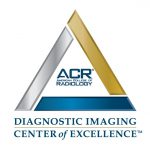 Diagnostic Imaging Center of Excellence™
Diagnostic Imaging Center of Excellence™
Saratoga Hospital has been designated a Diagnostic Imaging Center of Excellence™ (DICOE) by the American College of Radiology (ACR), the highest form of recognition an imaging department can receive nationally. The designation applies to the imaging facilities at both the Hospital and Wilton Medical Arts locations, the first facilities to earn this recognition in New York State outside of the New York City and Buffalo regions. The DICOE program, which represents the pinnacle of medical imaging care, requires a rigorous approval process. It is an achievement that goes beyond accreditation to recognize best-quality imaging practices and diagnostic care in all the services the Hospital’s imaging department provides, including quality patient care.
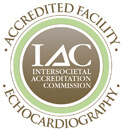
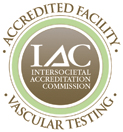 IAC Accreditation for Medical Imaging
IAC Accreditation for Medical Imaging
Saratoga Hospital has been accredited by the Intersocietal Accreditation Commission for both Echocardiography as well as Vascular Ultrasound. This recognition demonstrates our commitment to quality in patient care, quality in imaging, quality in interpretation, quality in reporting, and most of all, the overall quality of our facility.
Saratoga Hospital and many of its programs and services have received some of the highest available recognition for quality and care. Learn more about our many awards and achievements here.



